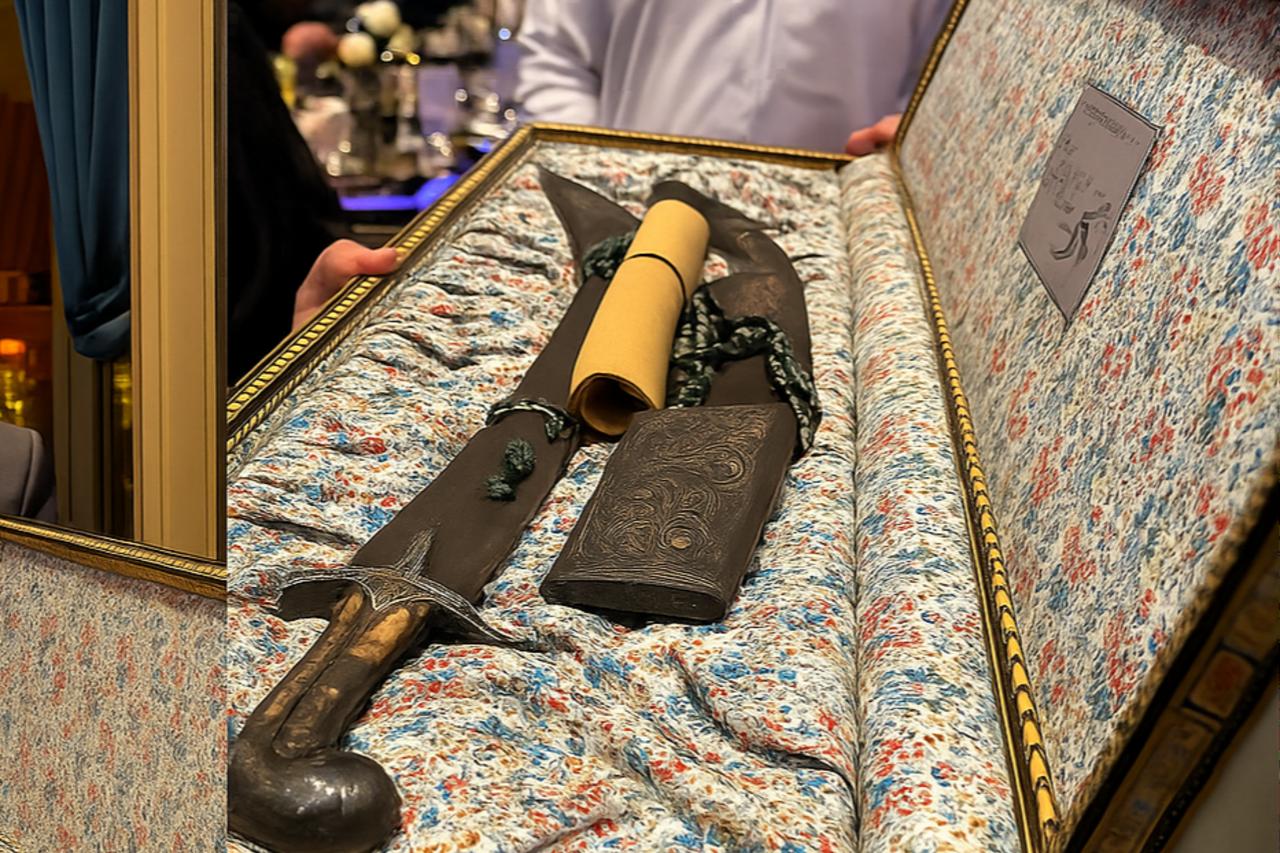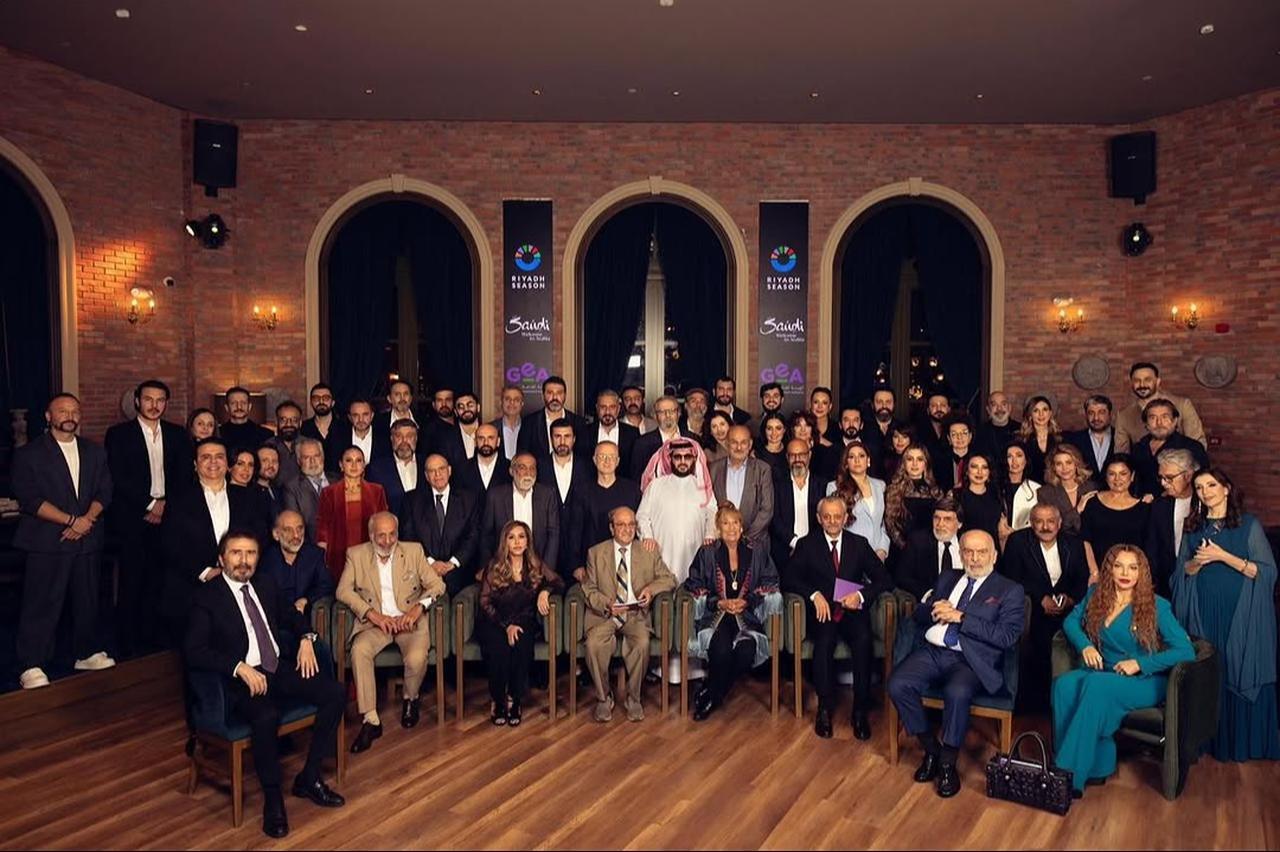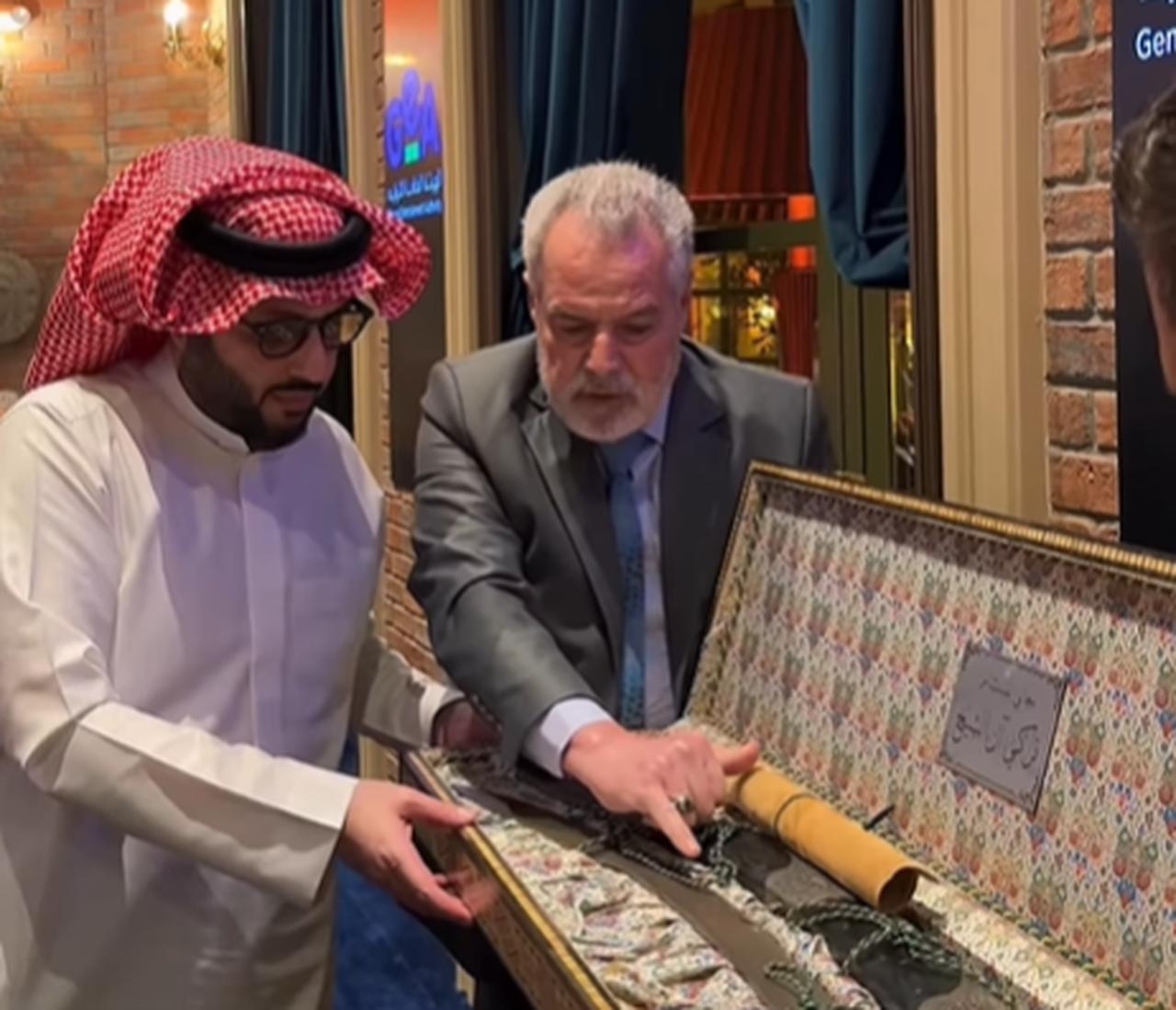
Saudi Arabia’s General Entertainment Authority Chairman Turki Al-Sheikh shared a video on Saturday showing a gift he received during his meeting with Syrian artists in Riyadh.
In a post on social media, Al-Sheikh said he was presented with “a precious gift from the people of Damascus”—a Damascus sword and a Najdi sword crafted by Fayad Al-Sayoufi, described as the last remaining maker of traditional Damascus blades.
Al-Sheikh expressed his gratitude, writing, “I received a valuable gift from our beloved Syria, from the only remaining craftsman of Damascus swords, whose family has passed down this art for generations.”
The craft of sword making in Syria holds a prestigious place that dates back to as early as the 10th century A.D. The swords were produced using a special technique known as “Damascening.”

For centuries, Damascus swords were renowned for their unparalleled sharpness, strength, and beauty. Originating from Syria, these blades gained fame during the Crusades, when Western warriors first encountered Muslim fighters wielding swords so sharp they could slice through a silk scarf midair.
The surface of each blade shimmered with wavy patterns resembling flowing water or wood grain—known as damask—and often displayed motifs such as “Mohammed’s Ladder” or “roses.”
By the early 1800s, the art of crafting these blades had vanished, leaving scientists and blacksmiths mystified for generations.

The process begins with selecting the steel—a high-purity alloy containing an ideal mix of carbon and other metals. The metal is then heated until it becomes soft and malleable, forged, and folded several times to strengthen it and enhance its cohesion.
The third stage involves adding the signature wavy patterns. “The famous Damascus patterns are created by overlapping different layers of steel,” explains swordsmith Al-Sayoufi.
Next comes quenching, where the blade is cooled in a special mixture of water and oil to achieve the desired hardness. The final stage is polishing, in which the sword is refined and buffed to reveal the intricate patterns and produce a bright, glossy finish.
At the heart of every Damascus sword was wootz steel, a material first produced in southern India between 300 B.C. and A.D. 500 . This high-carbon steel—made by melting iron with charcoal and organic matter in sealed crucibles—was cast into small “cakes” or “ingots,” shipped to Damascus, and forged into blades.
The forging process involved repeated cycles of heating, hammering, and folding, which transformed the steel into its iconic patterned form.